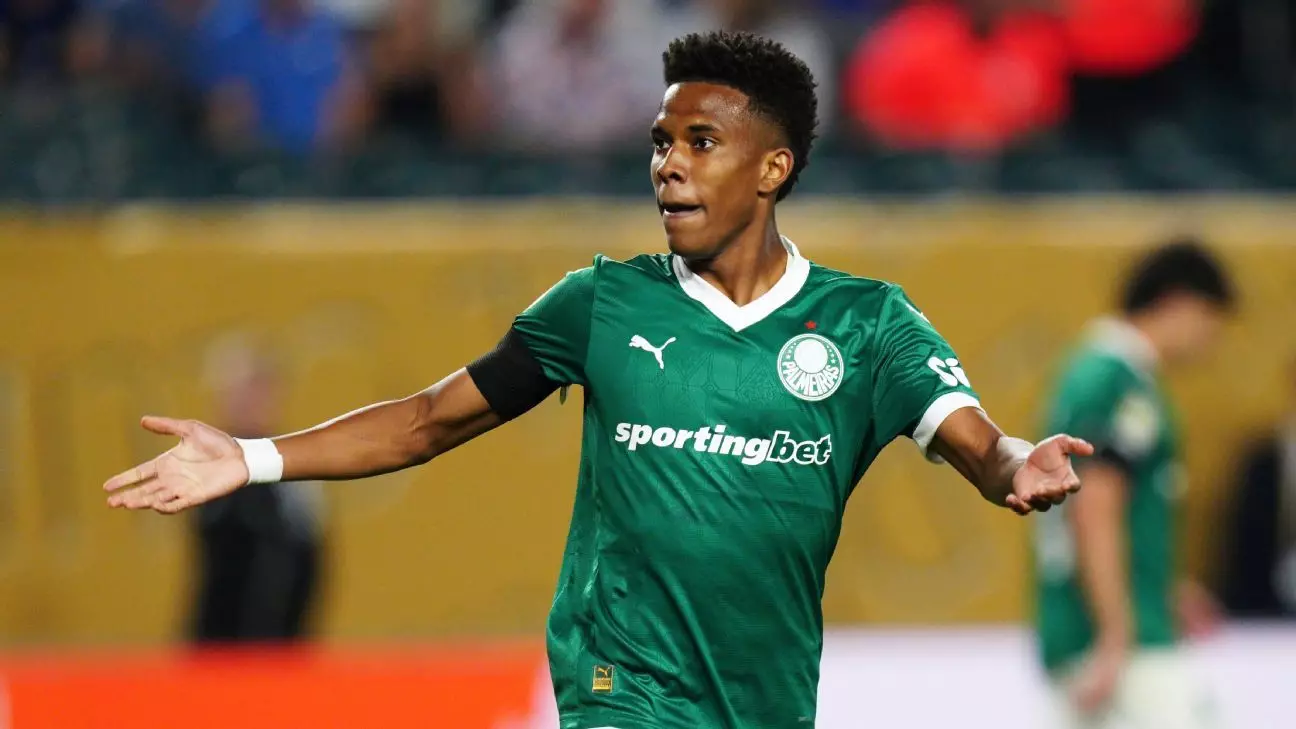In an era where experience often seems to outweigh raw talent, the football world is gradually recognizing the immense value young players bring to top-tier clubs. The recent showdown involving Chelsea and Palmeiras exemplifies this shift. Estêvão Willian, an 18-year-old sensation, did not just make a fleeting appearance; he announced his arrival with a stunning goal and an impressive display of skill that caught everyone’s attention. This incident is more than a mere highlight; it signifies the importance of nurturing young talent within elite football organizations. The potential of teenagers like Estêvão highlights a pivotal opportunity for clubs to build future dominance by investing in youth development rather than solely relying on seasoned veterans.
The Significance of Care and Support for Young Players
Palmeiras coach Abel Ferreira’s candid advice to Chelsea—”embrace” and “take care of him”—resonates strongly in the context of modern football management. Transitioning from South American leagues to the competitive environment of the Premier League is no small feat for any young player, especially one as talented as Estêvão. Ferreira’s words underscore the reality that raw talent alone is insufficient; mental resilience, cultural adaptation, and personalized guidance are critical for long-term success. Chelsea’s responsibility extends beyond the pitch: they must foster an environment of patience and mentorship, allowing Estêvão to grow without the pressure of immediate perfection. That nurturing can turn a promising talent into an irreplaceable cornerstone for the club’s future.
The High Stakes of Big Money and Big Dreams
Chelsea’s £33.8 million investment in Estêvão reflects a broader trend in football: clubs are increasingly willing to spend large sums on young prospects with potential. While such investments can yield extraordinary returns, they also come with elevated expectations and immense pressure on both club and player. The risk lies in mishandling or rushing the developmental process, which can lead to stagnation or burnout. However, when managed well, this gamble can result in the emergence of a superstar capable of elevating the team’s performance and market value simultaneously. The challenge for Chelsea—and similar clubs—is balancing immediate results with long-term nurturing to maximize the value of this high-profile acquisition.
Cultural Adaptation: The Hidden Challenge
Ferreira’s light-hearted comment about the sun not shining frequently in England might seem humorous but hints at a real hurdle: cultural and environmental differences can significantly impact a young player’s adaptation. Moving from Brazil to England involves more than just changing clubs; it entails adjusting to new weather, lifestyle, and expectations. This adjustment phase can influence a player’s confidence and mental health, which are crucial for performance. Clubs that recognize this and offer comprehensive support systems—be it language lessons, mental health resources, or cultural acclimatization programs—are more likely to see their investments pay off. Failure to consider these nuances can hinder even the most talented players from reaching their full potential.
The Role of Experienced Mentors and Leadership
Maresca’s acknowledgment of Estêvão’s talent as “perfect” and “huge” underscores the importance of leadership in harnessing youthful exuberance. An experienced coach or mentor not only refines technical skills but also instills discipline, patience, and tactical awareness. Success stories across football history reveal that the brightest talents often flourish when guided by seasoned professionals who understand the delicate balance of nurturing potential while managing expectations. It is a testament to the importance of club culture and coaching staff that can see beyond immediate results and prioritize the holistic development of players. Chelsea’s challenge will be in creating an environment where Estêvão can evolve without the fear of failure overshadowing his bright prospects.
The encounter between Chelsea and Palmeiras is more than a match; it’s a blueprint for how clubs can leverage youth talent to reshape their future. Estêvão’s spectacular display and Ferreira’s heartfelt advice serve as a reminder that nurturing young players is an investment in the longevity of a club’s success. It demands patience, care, and strategic leadership—qualities that can turn a promising teenager into the face of a new football dynasty. If Chelsea and other top clubs embrace these principles, they will not just find star players—they will cultivate legends.

